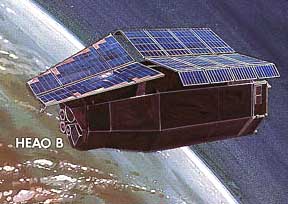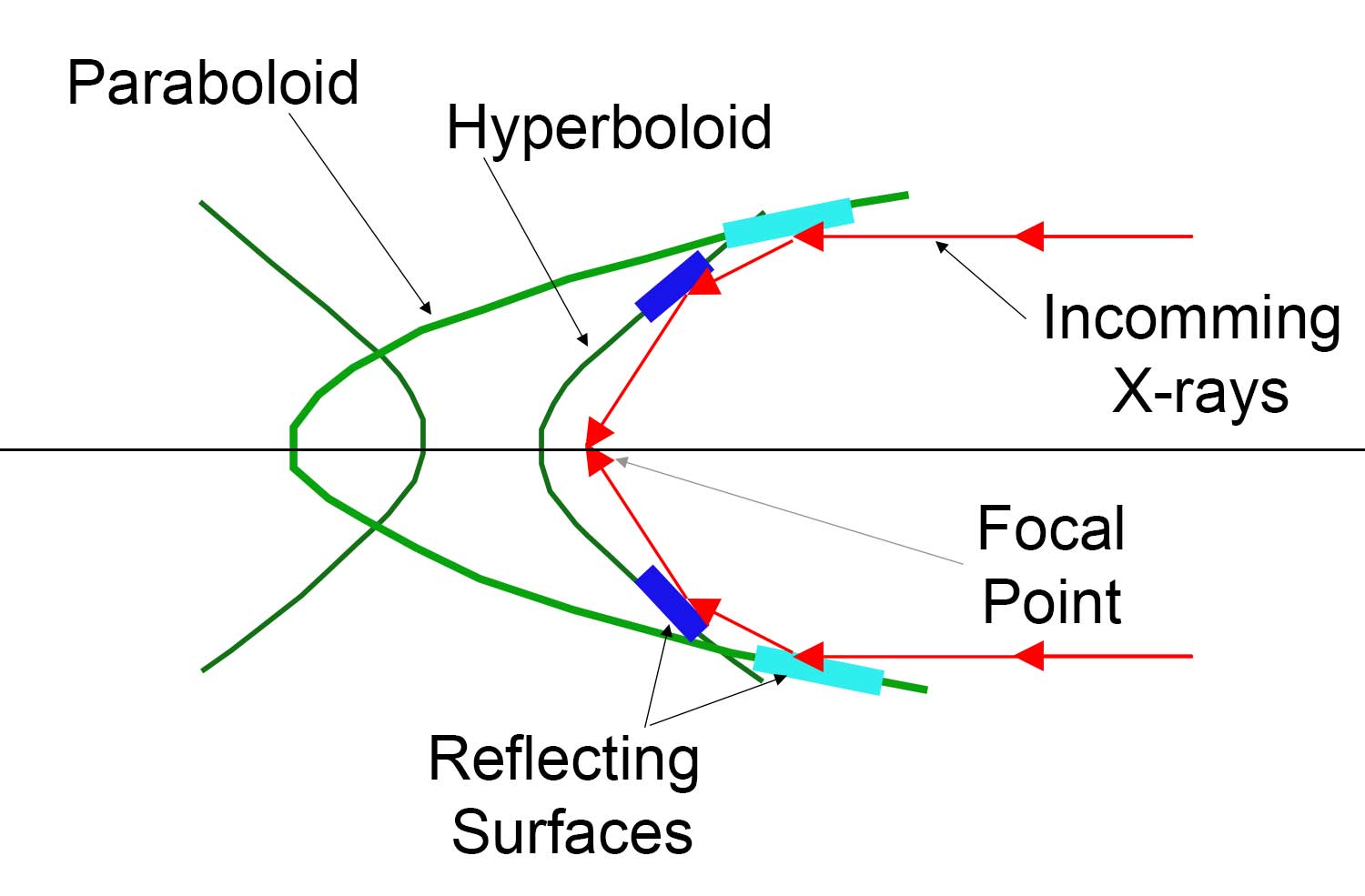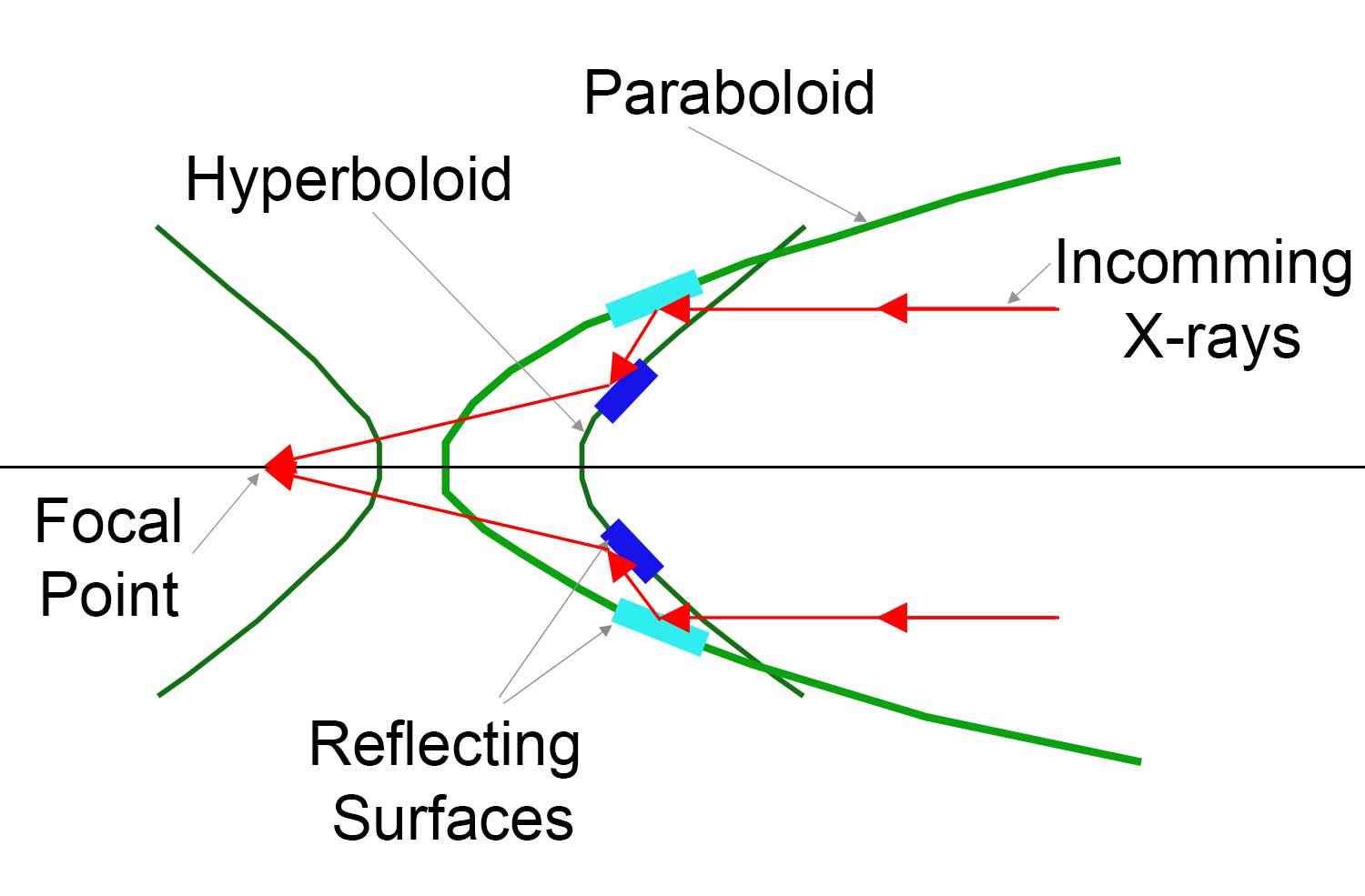X-ray Telescopes - More Information

Artist's conception of the Einstein satellite (also called HEAO-B). This was the first fully imaging X-ray telescope put in space. (Credit: NASA)
The best way for astronomers to increase their ability to detect weaker X-ray sources was to develop ways to image the X-ray sky. Similar to the way an optical telescope increases our eye's ability to see faint stars, an X-ray telescope can concentrate the light from an X-ray star onto an electronic eye.
An imaging detector can view several X-ray emitting objects simultaneously, or can create pictures of regions of diffuse X-ray emission. While the appeal of an imaging X-ray system is obvious, the means to construct an X-ray telescope required many years after the birth of X-ray astronomy.
The introduction to X-ray Telescopes introduced the idea of grazing incidence telescopes for X-ray astronomy. The exact implementation of such a telescope was something that astronomers and engineers explored for many years.
 Type II
Type II

Type III

The Wolter X-ray telescope designs. (Credit: NASA's Imagine the Universe)
A simple parabolic mirror was originally proposed in 1960 by Riccardo Giacconi and Bruno Rossi, the founders of extrasolar X-ray astronomy. This type of mirror is often used as the primary reflector in an optical telescope. However, images of off-axis objects would be severely blurred. (This happens in optical telescopes, as well, but they are able to get around the problem by using a secondary lens to correct this blurring.) The German physicist Hans Wolter showed in 1952 that the reflection off a combination of two elements, a paraboloid followed by a hyperboloid, would work far better for X-ray astronomy applications. Wolter was not the first to suggest reflecting X-rays to create an imaging system; however, his designs are the ones most commonly used in X-ray telescopes today.
Wolter described three different imaging configurations, the Types I, II, and III, which are shown in the figure to the right. The design most commonly used by X-ray astronomers is the Type I since it has the simplest mechanical configuration. In addition, the Type I design offers the possibility of nesting several telescopes inside one another, thereby increasing the useful reflecting area. This is an extremely important attribute, since virtually all X-ray sources are weak, and maximizing the light-gathering power of a mirror system is critical. The Chandra X-Ray Observatory is a Wolter Type I telescope that has four thick nested mirrors coated in iridium. The Japanese X-ray observatory Suzaku uses a conical approximation of the Wolter Type I design. Its mirrors are coated in gold, and they are far thinner than the ones used in Chandra. This allows for denser nesting, so there are 700 mirrors instead of four. The result is a much higher collecting efficiency at a reduced weight.
For comparable apertures and grazing angles, the primary advantage of Type II over Type I is that higher magnifications are attainable. This is because the second reflection is off the outside of a surface, which allows longer focal lengths. However, since off-axis images suffer much more severely from blurring in Type II configurations, the Wolter Type II is useful only as a narrow-field imager or as the optic for a dispersive spectrometer. The Wolter Type III has never been employed for X-ray astronomy.
Watch the movie below to see more about how the X-ray telescopes were manufactured for the Suzaku mission.
This video shows how Suzaku mirrors were manufactured and what a mirror assembly looks like for an X-ray astronomy mission. (Credit: NASA/Suzaku E/PO team)
Text updated: September 2018


